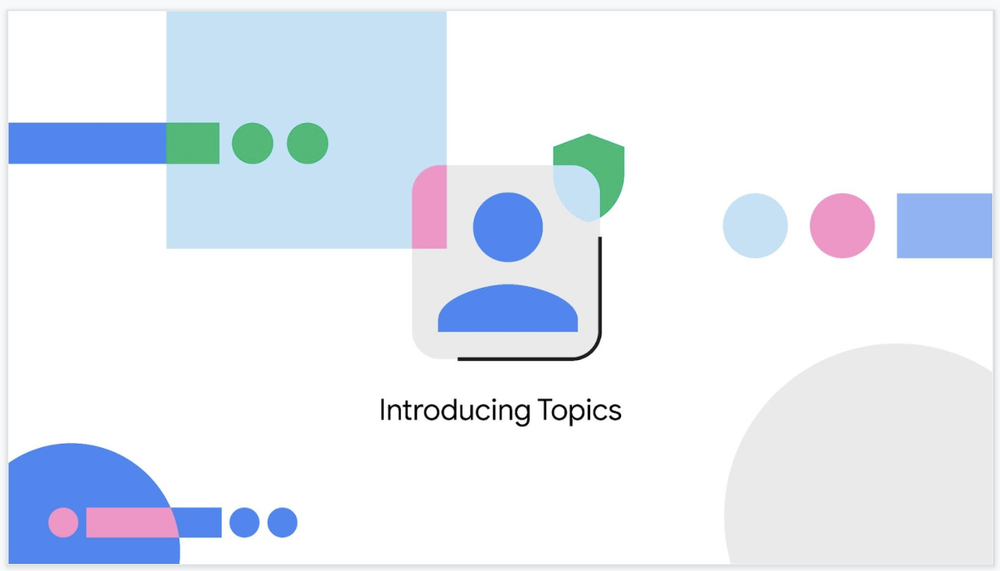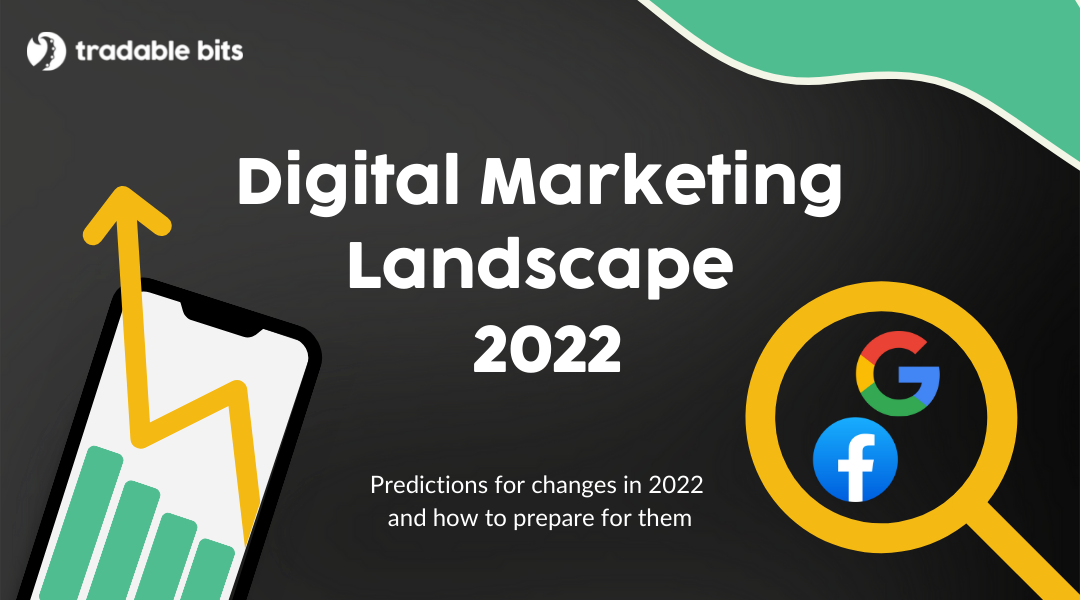The world of digital marketing has shifted extensively in the past year, from data compliance across the globe to Google’s efforts in replacing the all-powerful pixel. With these changes, one thing is clear - now is the time to change how you collect data.
Our team of industry experts at Tradable Bits have compiled predictions of what the digital marketing landscape will look like in 2022. Read on to equip your team with the right tools to thrive in this ever-changing landscape.
Privacy Changes 2022
iOS14. The start and “end” of it all. We know its impact intimately, and we’re guessing you do too. This is year two of measuring the effect of more limited reporting and lower opt-in rates. In general, we’re seeing trends towards building “owned audiences” by collecting first-party data, and a return to a blended ROAS method of attribution.
What else? The race for an alternative to the cookie is heating up. With Google’s plan to phase out third-party cookies just around the bend, most of us have our ears to the wall to hear new solutions in the pipeline.
Google’s Take On Cookies

Speaking of Google, they have recently announced their next iteration of a replacement to cookies called “Topics.” Topics proposes targeting ads to people based on general categories of content they check out online, which may sound quite familiar to its predecessor FloCs. Unlike FloCs, however, the categories are more general, and access to any category of content a person might view is far more restrictive.
What does this mean for us as marketers? The same as before - collect as much consented first-party data as possible before the 2023 deadline.
Tracking is Not Gone for Good
Ultimately these changes to the data collection process have transformed our workflows and have put more power back into the hands of consumers. But with these changes, there’s new opportunity. Not only can we anticipate the big institutions (Google, Meta, TikTok, etc) coming up with new tools, but there’s a whole world of collaboration at our fingertips. We’re talking integrations.
Beyond the zero-party data collected from fans through surveys and the like, a plethora of first-party data exists in siloed compartments across your properties. Integrations that pull all of this information into one centralized system offer an immense opportunity to marketers in the form of visibility and depth. They also offer a living and breathing database that’s not heavily reliant on one institution or another. Ultimately this means marketers can rely on more secure data to segment and target audiences.
A New Focus
Marketers are shifting focus to first-party data. Why? Because first-party data fits snugly in an ecosystem that prioritizes choice and privacy. Not only does it rely on consumers giving their data freely, but it also takes into account whether people want to engage with your brand - the more value and connection you bring to your consumers, the more first-party data you’ll be able to collect.
First-party data is set to become the new backbone of consumer data.
Audience Creation
With the demise of cookies and pixels fast approaching, it’s integral for digital marketers to take ownership of building their audiences in 2022. By this, we mean getting your hands dirty in amassing first-party data to retake control of your targeted segments.
The reality with third-party data is that you don't know which audiences you truly control until they are gone. Take January for example, where Facebook removed thousands of target audiences relating to sensitive topics in order to align with the changing privacy regulations. Unfortunately, these types of targeting changes will likely be the tip of the iceberg, so it pays to be steering your ship.
As such, we’ve compiled some useful suggestions to support your audience creation endeavours:
1. Build Trust
When creating your own audiences, trust must be central to your strategy. With a focus on appropriate messaging and meaningful engagements, marketers can connect with customers on a more personal and human level. First-party data is reliant on this trust. It is also important to ensure that proper security measures are in place in the case of data breaches, and to maintain transparency.
2. Leverage incentives
While first-party data is inherently free, it is unlikely your customers will give up their data without some kind of exchange. Therefore, when collecting information about your target audience, consider including some creative incentives. This could involve hosting contests, adding membership services for premium content, or exclusive offers and discounts for those who sign up for your newsletter.
3. Simplify the process
It is important to make it as seamless as possible for customers to hand over their data. One strategy is to make registration optimized for mobile entries in order to allow customers to quickly enter on the move.
Keeping the registration forms short and free of unnecessary questions or entry fields will result in more users signing up. Then, once they’re signed up, you can continue tapping users with progressive profiling questions.
The second piece is allowing customers to effortlessly withdraw consent from data use at any time. This is crucial to an exchange of data and ties back to the need for building trust.
4. Utilize zero-party data
When gathering your first-party data, more personal details such as your audience's preferences, interests and purchase intentions are incredibly useful for future targeting. This type of data is known as zero-party data and involves customers intentionally and consensually providing their information. Beyond boring sign-up sheets, digital engagement campaigns with custom fields are a great way to inspire your consumers to share their thoughts. Some proven strategies to collect this data could include personality quizzes, surveys, spin to wins and more.
Flexibility Within Advertising in 2022
While building an audience from first-party data does require a more hands-on approach, it leads to an increased ability to personalize messaging, a more responsive audience, and ultimately higher conversion rates than that of third-party data. It also lets you respond more accurately to changes in your target audience.
The Gen Z Migration
Over the past year, experts have started seeing younger users relocate to more exclusive and personalized social platforms such as Discord or Reddit forums. If you’re collecting the right first-party data, you likely know which of these forums your consumers frequent and can learn more about the value these collaborative spaces bring to them. As people turn inward to more intimate environments, personalizing your communication and giving your consumers an authentic experience will be integral.
Learn on the Go
Learning from your mistakes is fundamental in building better campaigns, but why wait till the campaign is finished to get feedback? In today's changing world of data collection, marketers have better real-time feedback (especially when they’re using integrations), permitting them to gain feedback and pivot before the end of a campaign, preventing disaster.
Touchpoint Touchdown
The one thing we can be sure of in today’s digital environment? The more touchpoints in the right places for your consumers, the more likely you are to convert. Using your first-party data, you can not only define what constitutes a good place to reach your audience, but you can serve direct and personalized ads that ring of value to them.
Overall, while integrating first-party data within your ads strategy requires some depth of work in defining audiences, the long-term benefits far outweigh the upfront work.
Key Takeaways
- First-party data should be your number one priority
- Build and take control of your audience before 2023
- Take advantage of more personalized and repeat advertising


